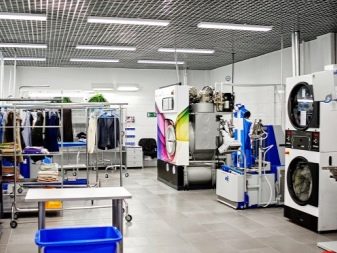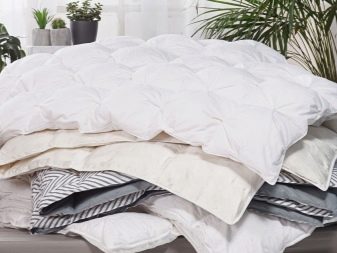All about duvets
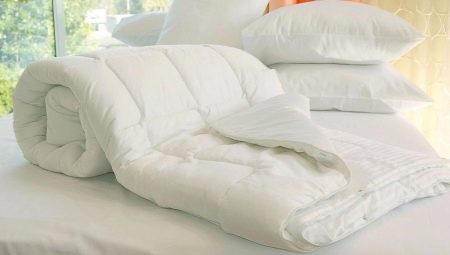
There is a wide variety of blankets on the market - from lightweight and airy to heavy and solid pieces. Many buyers are sure that they need to choose a classic, that is, a duvet. Although they really - and this happens often - do not fully understand what the features of such a product are, why duvets are good, how to choose them and how to care for them.
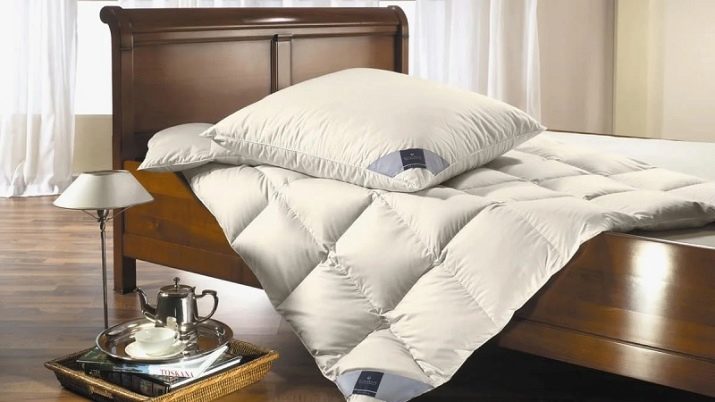
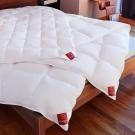
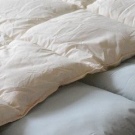
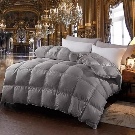
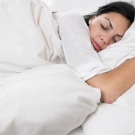
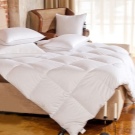
Features, pros, cons
In terms of warming properties, these warmest winter blankets are unrivaled. There is a soft downy cloud inside the cover, and they say that you can sleep under one even in frosty weather with the window open. But it is the perfect option for a quality product made from waterfowl down.
But there are also blankets made of artificial down, as well as goods of dubious quality, which, under the guise of down blankets, sell either a fundamentally different composition, or a product with a broken manufacturing technology.
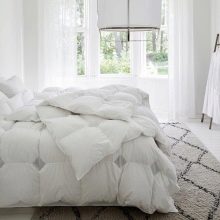
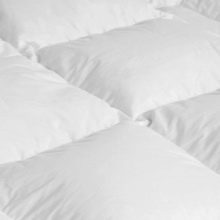
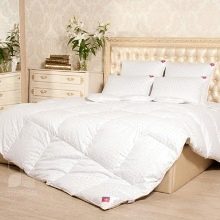
Pluses of duvets.
- Comfort. They are gentle, cozy, soft, warm and quite light. All night long it is warm under them, even psychologically there is some kind of protection.
- Good breathability. Natural fluff is perfectly ventilated, and therefore it will not be stuffy under such a blanket.
- High thermal regulation. Down in any weather in the body of a bird must maintain the optimum temperature for a particular moment in time. And this feature of down is preserved in products made from it. Therefore, neither hypothermia nor overheating under such a blanket is terrible.
- Elasticity. The blanket will retain its original volume for a long time without losing important markers of thermoregulation.
- Ease. The average weight of a duvet is 1 kg. The lower the percentage of the pen in it, the lighter it will be.
- Service life is longer than usual. If a standard blanket is designed to last 5-7 years on average, a duvet can be used three times longer.
Another issue is that due to hygienic conditions, blankets need to be changed more often.
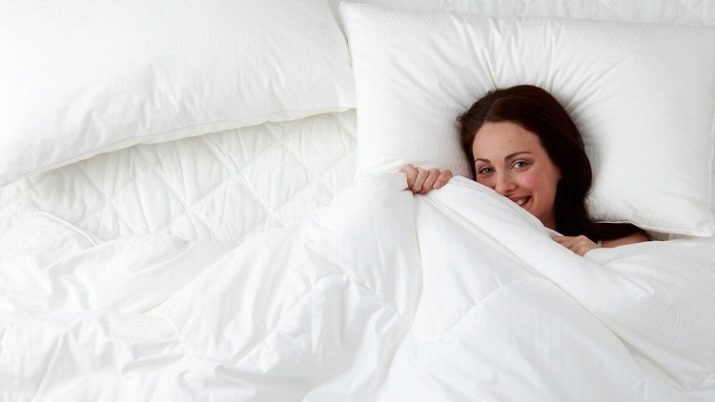
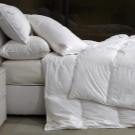
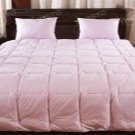
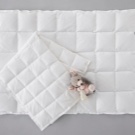
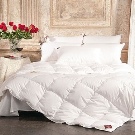

Among the minuses, the main one will be the likelihood of an allergic reaction, which is caused by the composition of the blanket. And also bird down is attractive to fungus, ticks, mold. Initially, the composition is processed with special means that protect the fluff from this scourge. But over time, the remedy ceases to work.
Also, a disadvantage can be called the need for laborious care of the blanket, handing it over to dry cleaning. And finally, the high price tag. This blanket is the most expensive of all popular types.
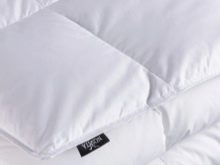
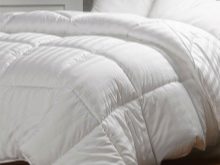
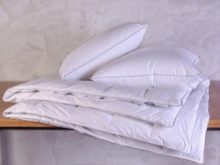
Manufacturing technology
There are two popular types of blankets - quilted and cassette. There is also a third type - karastep. But which is better is not an easy question.
Cassette
The technology itself is complex and expensive. The cassette is a container made of fabric that holds the fluff. There is fluff inside each cassette, and the side walls of these cassettes are connected to each other. Inside the cassette, the fluff is evenly distributed, which means that it is also distributed over the area of the entire blanket. According to the heat class, cassette blankets are considered warm and all-season.
How exactly the bed warms up depends on the weight and amount of filler. The more fluff there is in the blanket, the warmer it is. The filler should fill the cassette volume entirely, without squeezing or unevenly distributed. The height of the cassette of the all-season blanket is one and a half centimeters, the warm one is three.
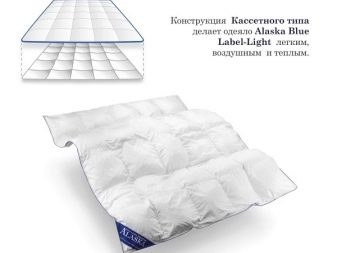
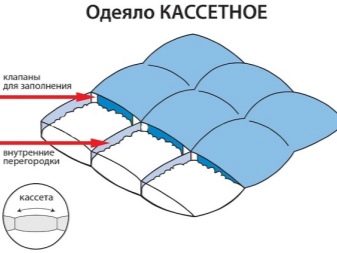
Quilted
In this case, the filler will be quilted together with the cover, the needle follows from top to bottom so that the cover is pierced through. And in places of stitches, where the top and bottom of the cover are in contact, cold zones are obtained. Therefore, such blankets are usually designed for the warm season, because in terms of the quality of heating they are worse than cassette blankets.
By the way, they are called that - summer. They refer to a temperature regime of 22 degrees: if the room is at this temperature, quilted duvets are suitable for sleeping.
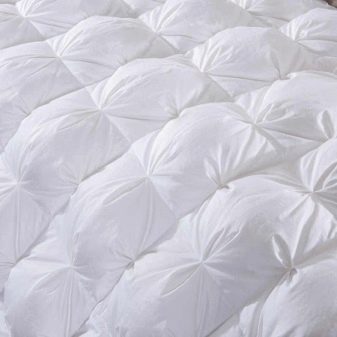
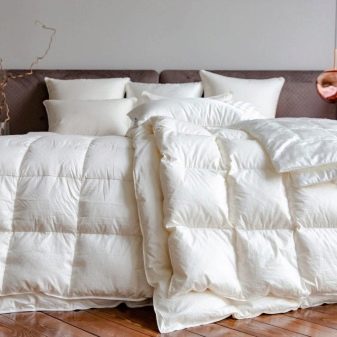
Karastep
This is the name of the sewing method, according to which the blanket is sewn patterned or according to some kind of pattern. Of course, this adds elegance to the product. But the practicality of the blanket is not as high as that of the cassette and quilted look. Often these items are purchased for the guest room, where the blanket is not supposed to be used every day.
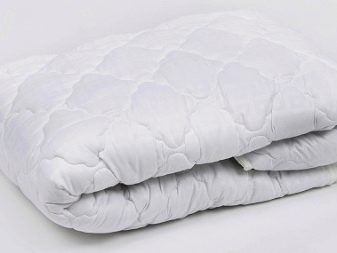
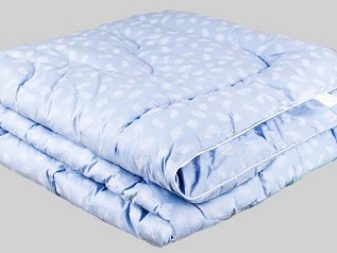
Types of fluff
Actually, there are two broad categories here - natural products and artificial ones.
Natural
The raw material is mainly used from bird plumage. Most of modern enterprises try to get it from live birds, adjusting the collection for the period of natural molting. Living creatures do not suffer, while the raw material is what the birds would have thrown off anyway. The plumage of eider, goose and duck feathers is most in demand. If you single out an elite product in this category, it will include an eider feather. This bird lives in northern latitudes, preferring a cold climate, and therefore, even in frost, its feathers, which have become the basis of a duvet, will reliably warm.
Goose down, for example, is heavier than eider down. It can be Swiss - this is the name of the fluff with the maximum volume, European - with a high quality standard, and the world, which is characterized by a small volume, and it is more often found in the products of the inexpensive segment.
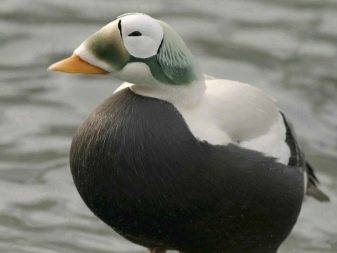
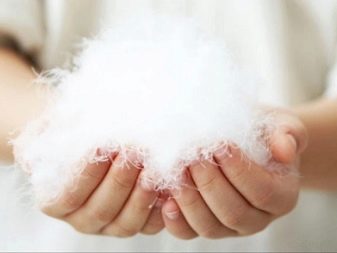
Goat and camel down became famous. Products made from goat undercoat have relative lightness, increased hygroscopicity and a high degree of elasticity. Of the minuses of goat down, high thermal insulation can be distinguished. That is, in one case it is, of course, an indisputable plus, but in summer it is difficult to sleep under such a blanket. Again, these products are quite capricious in processing, for example, by choosing the wrong temperature, you can ruin the blanket, and the restoration will be controversial.
Camel's down is not camel's hair, it is, oddly enough, completely different fillers. Down is obtained by combing out the light, very soft undercoat of young camels. This material has a hollow texture, which helps to maintain a fixed body temperature. And a huge plus of these products is the high content of lanolin, that is, animal wax, which means that a camel down blanket is not just a lightweight option, but also a healing one. It has a beneficial effect on the health of muscles and joints.
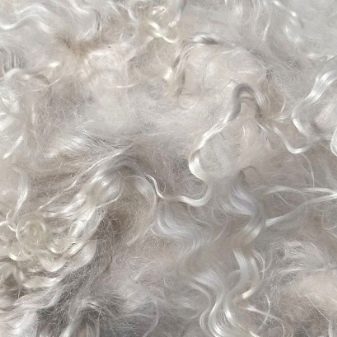

Artificial
This is what is meant by the word "swan". This is the name of a synthetic filler, which is made from artificial (and this is important!) Fiber. Such fluff has no direct relation to swans. Products with this filler do not absorb odors and moisture, and are hypoallergenic. But they are probably too warm for summer and off-season. For obvious reasons, these blankets will be cheaper than natural ones. But with air ventilation, not everything is as rosy as in the case of a natural product, and in practice, these products are noticeably electrified.
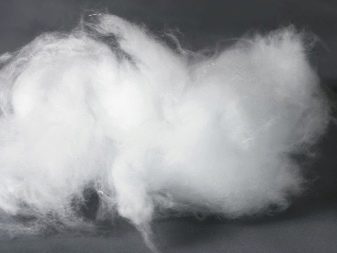

Dimensions (edit)
Everything is standard here: blankets can be for children, single or one-and-a-half, double, euro, as well as “king” size and non-standard. With downy products, the meanings are:
- single beds - 140x205 cm (there is an option of 140x200 cm);
- one and a half or family - 150x200 cm;
- double - 200x200 cm, but there are also more familiar options 172x205 cm;
- euro - 200x220 cm;
- "Royal" version - 240x220 cm;
- non-standard - 195x215 cm.
Baby duvets are not that common.
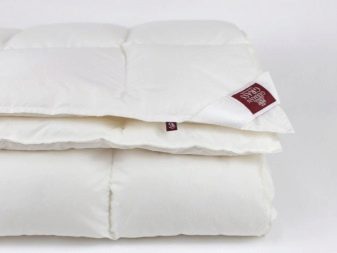

Top manufacturers
It is easy to get lost in the choice here, because Germany, Austria, Switzerland and Russia produce excellent down-filled blankets. The most popular brands that fully justify their demand for products include Belashoff - a Russian manufacturer, Mirson - Italian quality, as well as brands:
- "Quiet Hour";
- "Aphrodite";
- "Samson";
- Dargez;
- "Naturez";
- Togas;
- Ecotex.
Among these brands there are many Russian firms that are not inferior in quality to Finnish, Polish, German brands, including premium ones.

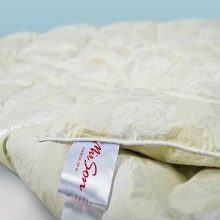
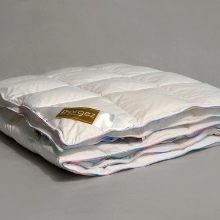
How to choose the right one?
First of all, you need to proceed from the amount that the buyer is ready to give for not the cheapest product. Since in the price segment of duvets, the breakdown is decent. In some cases, you have to seriously overpay for the brand. Tips for choosing.
- If this is a blanket made of gray down with a feather from 15%, the price of the product can be about 10 thousand rubles. But if this blanket is 100% handmade, the price goes up to 40 thousand, and this is not the limit.
- If the bedroom is cool, and the average temperature in it is within 19 degrees, a thick winter version of the duvet will be comfortable. If the room is warm and problems with temperature fluctuations are not expected, moreover, it is more often hot in it - you need to take an all-season or lightweight model.
- The cover must be of high quality, one-piece, made of silk or cotton fabric of high strength. But if the cover is synthetic, there will be problems with air ventilation. Actually, synthetics, in which the fluff is packed, is a deliberately losing combination. All the advantages of natural material are covered by an unsuitable cover.
- If the product is expensive, the covers in it are specially coated with silver ions, impregnated with a special composition of antibacterial properties. But such bonuses can be considered "special effects", which are not the fact that they are needed.
- You should definitely look at the quilting, it can go in channels or squares. Channels are rows and squares are cassettes. If the blanket is quilted with channels, there is a risk that over time, the fluff will begin to crawl out through the holes that were formed by the entrance of the needle when stitching. In the cassette version, there will be no such defect, but it also costs more.
- The blanket must certainly be touched. Tactile analysis is reduced to squeezing the corner of the product in the palm of your hand. If the down is of good quality, it will not delaminate or form lumps. If the product claims 85% or more fluff, sharp feather tips will not be felt.
- Also, experts advise not to buy products that are more than one and a half years old. There are doubts that the storage of the blanket was not disturbed, and this may affect the features and comfort of its subsequent use.
And, of course, the product must be certified.
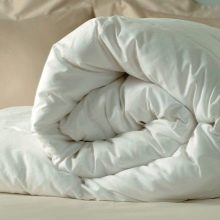
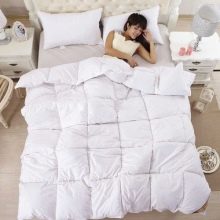
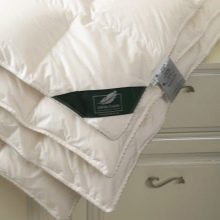
Washing and care
Each product has a tag that informs the buyer - indicates the specificity of care. The memo for the product should also contain information about care and washing. In general, the recommendations are as follows.
- The washing machine icon means machine wash is possible. A badge with a basin, with a hand lowered into it, gives permission for hand washing. But if a basin of water is crossed out on the tag, it means that it is impossible to wash the blanket either in an automatic machine or by hand.
- In most cases, the weight of the blanket is such that even a machine washable will not be able to handle it. If the blanket is large, it should be taken to the dry cleaner - there are more guarantees that the regime will be respected.
- If the product is placed in the drum of the machine, it must first be rolled into a roll so that the filler is less deformed and the blanket does not require further restoration. Wash should be done on the “delicate” mode, “hand wash” or “wool” category.
- If you use a detergent, then only in liquid form. You can find special gels for washing down products on sale.
- Rinsing at home is better to repeat a couple, or even three times.
- The water temperature for machine wash is not higher than 40 degrees, for hand wash - not higher than 30 degrees. If you wash it by hand, you cannot rub the blanket, just gently wrinkle it.
- If there is dirt on the surface of the cover, you can wash it by hand using laundry soap. Rub gently with a coarse-bristled brush.
- If you wring out the blanket in a typewriter, then only at minimum speed. It is difficult to do it manually, one cannot cope. You cannot twist the blanket.
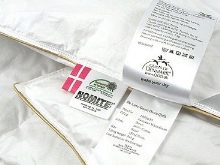

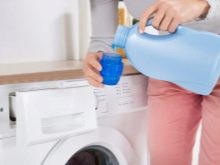
But you need to dry the downy product straightened, located in a horizontal position. There should be no heating appliances nearby. If you do not dry well, it is fraught with the formation of mold inside. Drying in the open sun is also excluded. Outdoors under a canopy is ideal. You can shake and turn the blanket during the drying process, but you should not try to beat the fluff.
If all this seems complicated and risky, professional cleaning masters will do everything without complaints. Since you often don't have to wash the blanket, from time to time you can spend money on competent care, which allows the product to last longer and to the delight of the owners.
